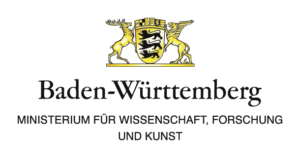Why are different parts of the Iron Age called in different ways?
Also in Sweden, the Iron Age is divided into the Early Iron Age (500 B.C–400 A.D.) and the Late Iron Age (400–1050 A.D.). These period are in turn subdivided. The first period is called the Pre-Roman Iron Age (500 B.C.–0). The choice of name is perhaps a little unfortunate it might seem, a period of 500 years of just waiting for the Romans. The following period is called the Roman Iron Age (0–400 A.D.) and the name derives from the great impact that the Roman world had on the Germans, also the Scandinavians. Roman import goods like glass, coins and bronze vessels reached Scandinavia during this time. The next time period is called the Migration Period (400–550 A.D.) This name comes from the great European migrations which took place at the fall of the Roman Empire. Also these had repercussions on Nordic society, for instance warriors from Scandinavia took part in the battles around the Roman borders. The name Vendel Period (550–800 AD.) is only used in Sweden and it derives from the rich ship burials which have been found in f. ex Vendel in the Swedish province of Uppland. The last part of the Iron Age is called the Viking Period (800–1050 A.D.) and how that name came to be is probably self evident. As a conclusion, it is obviously modern archaeologists who have subdivided the Iron Age, no one person living in the 7th century could tell that he or she belonged to the Vendel Period …
Jan Olofsson, Eketorps Borg (SE)
Varför kallas olika delar av järnåldern på olika sätt?
I Sverige delar vi in järnåldern i två delar, äldre järnålder (500 f.Kr.–400 e.Kr.) och yngre järnålder (400–1050 e.Kr.). Dessa perioder delas i sin tur in i olika delar. Den första perioden kallas förromersk järnålder (500 f.Kr–Kr.f). Namnet är kanske lite misslyckat, en period på 500 år i väntan på romarna kan tyckas. Perioden därefter kallas romersk järnålder (Kr.f.–400 e.Kr). Namnet har den fått efter den stora inverkan som det romerska riket hade på den germanska världen, också på Norden. Romerskt importgods såsom glas, mynt och dryckesserviser nådde Norden under denna tid. Nästa period kallas folkvandringstid (400–550 e.Kr.). Namnet kommer ifrån de stora folkvandringar som hände ute i Europa i samband med romarrikets fall. Dessa hade återverkningar på det nordiska samhället, bl a deltog krigare från Norden i striderna kring romarrikets gräns. Därefter följer en period (550–800 e.Kr.) vars namn, vendeltid, bara används i Sverige. Den har fått sitt namn av de rika båtgravar som hittats bl a i Vendel i Uppland. Järnålderns sista period är vikingatiden, (800–1050) och namnet kommer naturligtvis av vikingarnas framfart under denna tid. Men det är dagens arkeologer som har delat in järnåldern, det fanns ingen på 600-talet som visste att vendeltid rådde …
Jan Olofsson, Eketorps Borg (SE)






